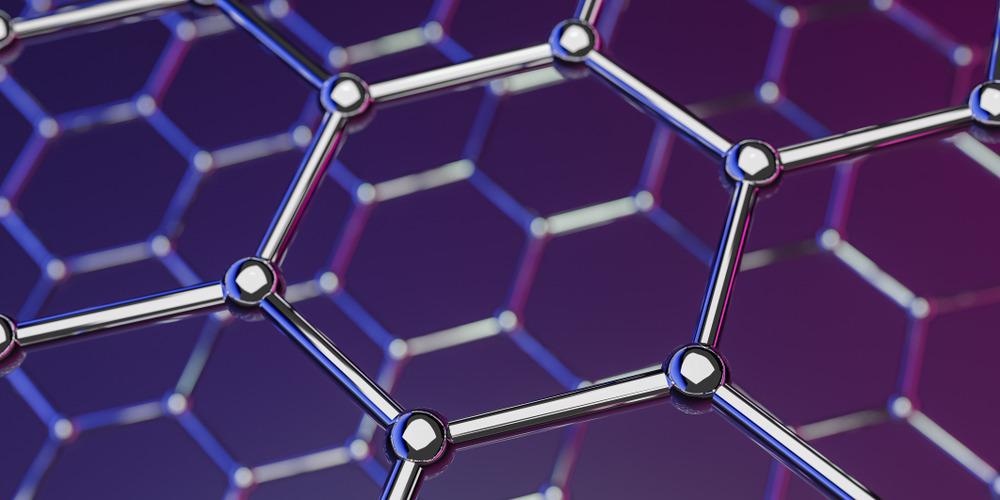The invention of triboelectric nanogenerators (TENGs) sparked an innovative plan for addressing the world's pressing energy concerns. To achieve TENGs with exceptional performance, the development of polytetrafluoroethylene films incorporated with graphene nanosheets utilizing micro-injection molding equipment was reported in research published in ACS Applied Electronic Materials.

Study: Graphene Nanosheets Enhanced Triboelectric Output Performances of PTFE Films. Image Credit: Production Perig/Shutterstock.com
Triboelectric Nanogenerator – Energy Source of the Future
With the increasing exhaustion of traditional fossil fuels and significant growth in worldwide power consumption, creating sustainable and low-carbon energy sources to achieve an estimated global carbon neutral state by 2050 is vital.
The innovative triboelectric nanogenerator (TENG) built on polymeric sheets generates electric energy by using the coupled impact of electrostatic induction and triboelectrification
It permits significant advancements in the development of microscale and nanoscale devices for collecting randomized, low frequency biomechanical and mechanical energies in everyday life, giving a practical way to address the pervasive energy problem and environmental challenges.
Enhancing the Performance of TENGs
Significant endeavors have been made to improve the triboelectric output capabilities of TENGs in demanding settings. Incorporating nanoscale and microscale components (also called nanocomposites) in the negative triboelectric component has been shown to be a simple and successful technique for improving TENG output triboelectric effectiveness.
Graphene and associated substances are highly sought-after for producing highly effective TENGs because of their distinct and remarkable features. Combining 2D materials with triboelectric nanogenerators enhances output triboelectric effectiveness of the promising two-dimensional TENGs and expands their prospective uses in energy harvesting systems and self-sustained sensory technologies.
In the past few years, there has been countless research on the super-lubricity (defined as having a friction coefficient on the scale of 0.001) of graphene and associated two-dimensional materials.
Based on these works, it is hypothesized that the doping of graphene materials into polytetrafluoroethylene (PTFE) polymeric layers can not only perform lubrication of the tribomaterials but also offer exceptional output triboelectric effectiveness in the obtained TENGs, making them excellent contenders for cutting-edge disruptive technological advances.
Highlights of the Research
In this research work, the researchers managed to manufacture highly effective triboelectric nanogenerators built on PTFE sheets doped with graphene nanosheets. The PTFE sheets were created utilizing conventional micro-injection molding apparatus in this investigation. The influence of the incorporated graphene nanosheet quantity on the triboelectric behavior of PTFE layers was explored through experiments.
The long-term operational stability and sturdiness of triboelectric nanogenerators built on GN-PTFE sheets were further described. The processes underpinning the remarkable triboelectric behavior of the GN-PTFE triboelectric nanogenerators were examined concerning compositional and structural changes on the tribomaterials' deteriorated surfaces.
This study may give a general technique for increasing the stability and longevity of high-performing triboelectric nanogenerators, hence broadening their possible uses in the realm of sophisticated energy systems.
Important Findings
Systemic findings showed that as the number of embedded graphene nanosheets grew, the triboelectric output effectiveness of the triboelectric nanogenerator built on the GN-PTFE sheet rose and eventually dropped, with the highest value obtained at 32 mg of dopant.
The insertion of graphene nanosheets in the PTFE sheet significantly increased the triboelectric output effectiveness of the developed triboelectric nanogenerator.
Furthermore, the triboelectric output effectiveness of the TENG produced from the GN-PTFE sheet was observed to be unaffected by the 10,000 cycles finger tapping procedure.
The morphological properties and chemical makeup of the PTFE and GN-PTFE sheets were studied using 3D laser confocal microscopy, optical microscopy, SEM, and Raman spectroscopy.
The homogeneous distribution of microscale graphene nanosheets into the PTFE framework resulted in the creation of transfer layers on the contact interface that were rich in graphene, increasing the abrasion tolerance of the GNPTFE sheet as well as the operational stability and longevity of the triboelectric nanogenerator built on the graphene nanosheet embedded PTFE film.
Scope in Practical Applications
The use of the TENG built on the GNPTFE sheet showed that 100 LEDs were concurrently illuminated by a periodical finger tapping procedure, implying significant prospects in challenging microscale and nanoscale energy areas.
The micro-injection molding equipment was shown to be a useful resource for the rapid, inexpensive, and bulk manufacturing of graphene as well as other 2D material-embedded polymeric tribomaterials in next-generation TENG systems.
Reference
Yang, P., Wang, P., & Diao, D. (2022). Graphene Nanosheets Enhanced Triboelectric Output Performances of PTFE Films. ACS Applied Electronic Materials. Available at: https://doi.org/10.1021/acsaelm.2c00334
Disclaimer: The views expressed here are those of the author expressed in their private capacity and do not necessarily represent the views of AZoM.com Limited T/A AZoNetwork the owner and operator of this website. This disclaimer forms part of the Terms and conditions of use of this website.